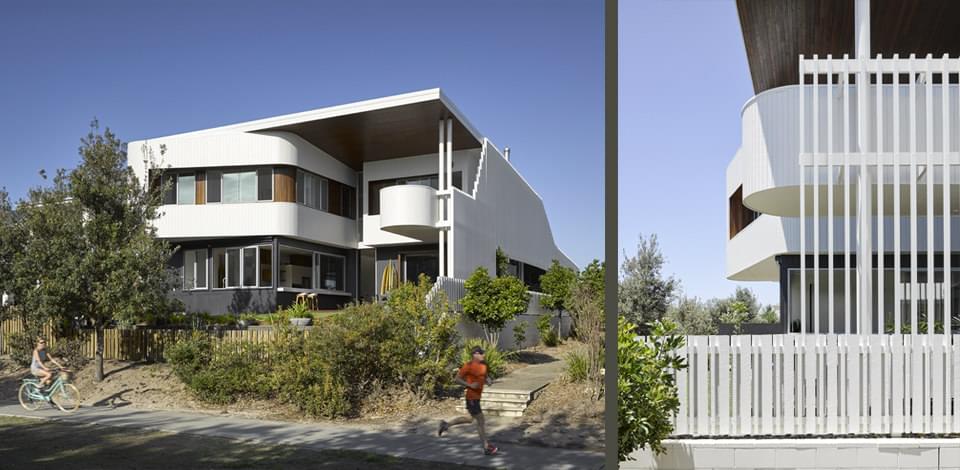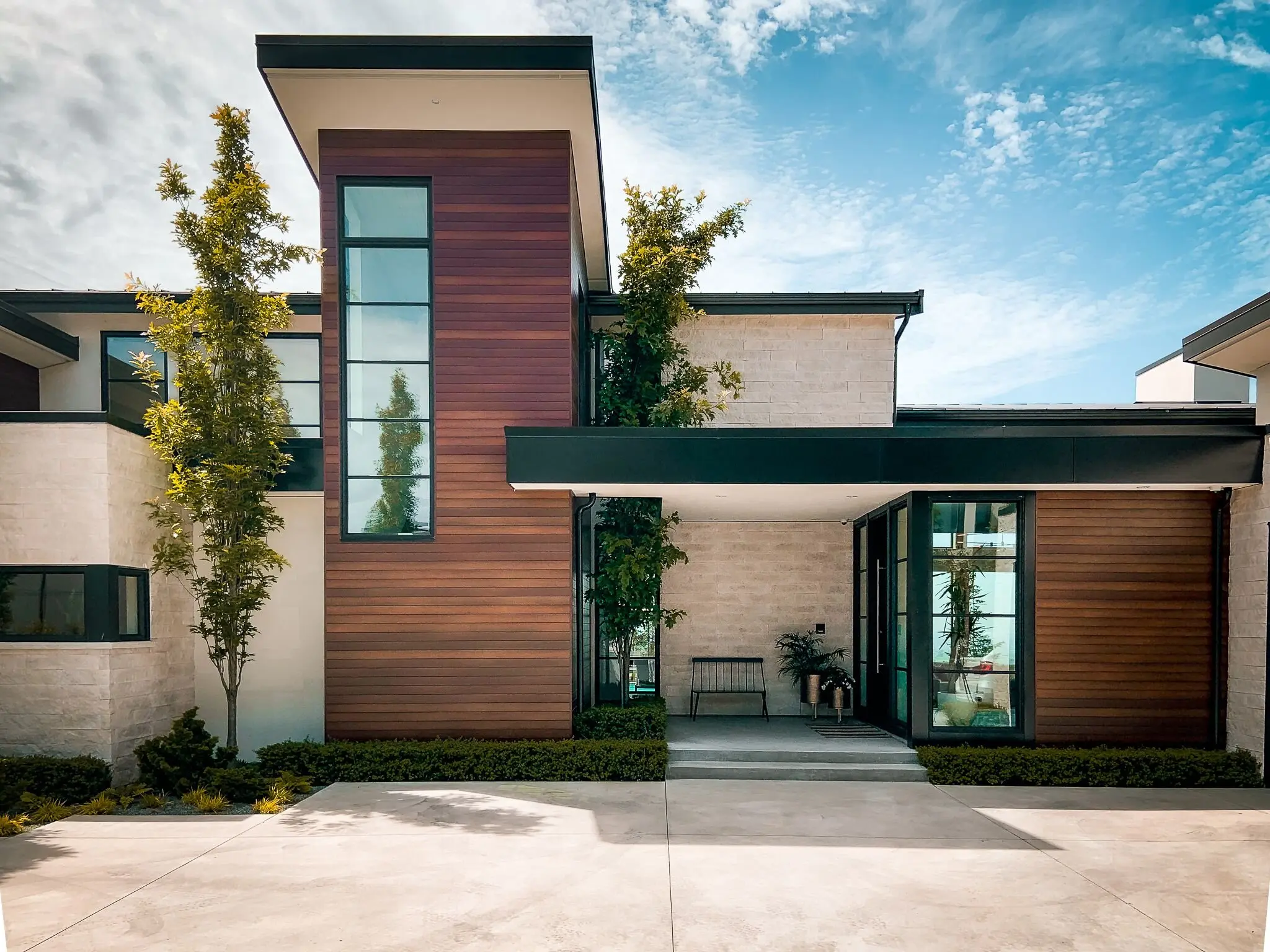Residential Interior Architect Services to Enhance Your Home’s Aesthetic and Functionality
Residential Interior Architect Services to Enhance Your Home’s Aesthetic and Functionality
Blog Article
Leading Trends in Residential Architecture You Need To Find Out About
As household style remains to advance, a number of engaging patterns are forming the means we design and inhabit our space. Key growths such as sustainable structure techniques, the combination of clever home modern technology, and the surge of modular homes highlight a significant shift towards both capability and environmental responsibility. In addition, principles like open plan living and biophilic design are redefining our interaction with room and nature. Recognizing these trends not just informs style options however also exposes wider ramifications for way of life and neighborhood - residential house architect. What might these developments mean for the future of domestic living?
Sustainable Structure Practices
An increasing number of residential jobs are welcoming lasting building practices, driven by an expanding awareness of environmental effect and power efficiency. This change is characterized by the assimilation of green materials, energy-efficient designs, and ingenious building methods. House owners and builders are progressively focusing on making use of renewable energies, such as bamboo and recycled steels, which not just lower the carbon impact however also enhance the sturdiness and visual allure of buildings.
Including energy-efficient systems is one more vital facet of lasting structure - residential house architect. Features such as high-performance insulation, energy-efficient home windows, and photovoltaic panels are becoming criterion in new household designs. These aspects not just add to reduced energy consumption but likewise offer considerable long-lasting savings for home owners
Moreover, the design of sustainable homes usually emphasizes natural light and ventilation, reducing the reliance on synthetic lights and environment control systems. Landscape design practices, such as xeriscaping, further advertise sustainability by decreasing water use.
As the demand for lasting living services remains to rise, the property architecture sector is poised to adjust and innovate, making certain that future homes are not only eco responsible however functional and also comfy for their passengers. - residential house architect
Smart Home Innovation
Smart home technology is revolutionizing the means property owners engage with their home, improving convenience, power, and security management. This innovative approach integrates various tools and systems, allowing customers to regulate their homes from another location or with automated processes. Central to this fad is using smart tools such as thermostats, lights, safety and security electronic cameras, and appliances, all linked via the Web of Points (IoT)
Among the most appealing attributes of clever home technology is the ability to customize setups for optimal power efficiency. Homeowners can keep an eye on power usage and readjust illumination, home heating, and cooling based on their routines, considerably decreasing utility costs. Advanced safety systems furnished with clever locks and security cameras give tranquility of mind, enabling remote monitoring and signals to prospective safety breaches.
Assimilation with voice-activated aides boosts user experience, permitting home owners to manage tools with easy voice commands. As technology continues to progress, the capacity for clever home systems to boost lifestyle expands, making them a crucial consideration in modern-day residential design. Eventually, smart home innovation is not merely a fad but a basic change toward extra smart living environments.
Open Principle Living
Open up principle living has become a specifying feature in modern property style, identified by the elimination of conventional barriers in between rooms. This layout approach advertises fluidity and connection within the home, permitting a seamless shift between locations such as the cooking area, eating, and living areas. By removing wall surfaces and dividings, open idea layouts create a feeling of spaciousness, promoting a welcoming ambience that improves social interaction.

Additionally, this approach to property style straightens with minimalism, concentrating on functional simpleness and visual comprehensibility. House owners value the versatility of these layouts, which can be quickly adapted to show individual design via furnishings plan and style. As open principle living remains to obtain traction, it continues to be a testimony to evolving family members dynamics and the wish for homes that enhance connection and convenience.
Biophilic Design
Biophilic layout has become significantly significant in property architecture, emphasizing the inherent connection between people and nature. This design philosophy seeks to incorporate natural components into living areas, consequently promoting a feeling of well-being and improving the lifestyle for passengers. By incorporating attributes such as all-natural light, vegetation, and natural materials, biophilic layout advertises a harmonious connection between indoor environments and the environment.
Secret components of biophilic style include huge windows that supply unobstructed sights of outdoor landscapes, living walls that present greenery into insides, and open floor plans that motivate airflow and natural light penetration. Water functions, both inside and outside the home, serve to develop calming atmospheres and improve sensory experiences.
Furthermore, the use of sustainable products not just supports environmental stewardship yet also adds to healthier indoor air top quality. As understanding of ecological problems boosts, homeowners are progressively focusing on styles that reflect their link to nature. Essentially, biophilic design not only elevates aesthetic appeal but also addresses emotional and psychological demands, making it a vital fad in modern residential design.
Modular and Prefab Houses

In addition, modular and prefab homes are designed with sustainability in mind. Lots of producers utilize energy-efficient systems and eco-friendly products, such as photovoltaic panels and progressed insulation methods, contributing to lowered power intake and lower energy expenses for home owners. The versatility of layout alternatives permits customization, satisfying varied aesthetic choices and functional needs.
As the need for cost effective housing continues to rise, modular and prefab homes present a practical solution, attending to both economic and environmental challenges. Areas like this are increasingly recognizing the possibility of these frameworks, integrating them right into urban and country setups. In general, the fad towards prefab and modular homes represents a change towards much more sustainable, efficient, and adaptable living environments, making them a crucial aspect of modern residential style.
Conclusion
Lasting building techniques and clever home modern technologies enhance performance and benefit, while open principle living and biophilic style foster social communication and a connection to nature. The surge of prefab and modular homes supplies customizable and budget friendly remedies, showing a broader change towards functional and responsible living.
Key growths such as sustainable building methods, the integration of smart home modern technology, and the increase of modular homes underscore a substantial shift towards both capability and environmental responsibility.The surge of prefab and modular homes has transformed the residential style landscape, using ingenious solutions for efficient and lasting living.In addition, prefab and modular homes are designed with sustainability in mind. Overall, the fad towards prefab and modular homes indicates a shift towards more sustainable, effective, and adaptable living settings, making them a pivotal aspect of modern property style.
Lasting building methods and wise home innovations boost effectiveness and convenience, while open idea living and biophilic style foster social communication and a connection to nature.
Report this page